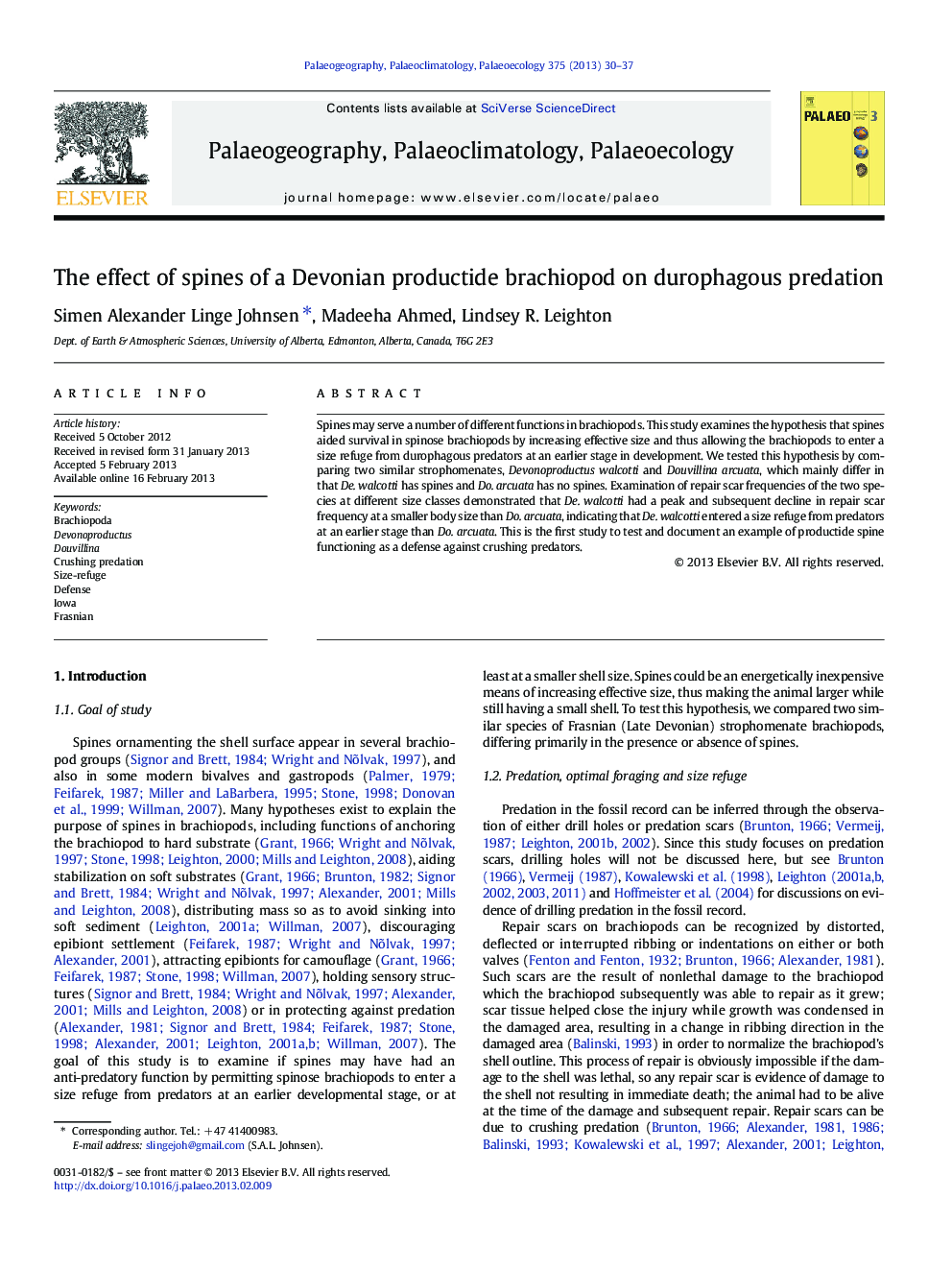| Article ID | Journal | Published Year | Pages | File Type |
|---|---|---|---|---|
| 4466653 | Palaeogeography, Palaeoclimatology, Palaeoecology | 2013 | 8 Pages |
Spines may serve a number of different functions in brachiopods. This study examines the hypothesis that spines aided survival in spinose brachiopods by increasing effective size and thus allowing the brachiopods to enter a size refuge from durophagous predators at an earlier stage in development. We tested this hypothesis by comparing two similar strophomenates, Devonoproductus walcotti and Douvillina arcuata, which mainly differ in that De. walcotti has spines and Do. arcuata has no spines. Examination of repair scar frequencies of the two species at different size classes demonstrated that De. walcotti had a peak and subsequent decline in repair scar frequency at a smaller body size than Do. arcuata, indicating that De. walcotti entered a size refuge from predators at an earlier stage than Do. arcuata. This is the first study to test and document an example of productide spine functioning as a defense against crushing predators.
► We compared the spiny Devonoproductus walcotti and the non-spiny Douvillina arcuata. ► We measured predation repair scar frequency of the two species at different sizes. ► Devonoproductus walcotti entered a size-refuge at a smaller size than Do. arcuata. ► Spines aided De. walcotti in defense from crushing predators.
